-
 Bitcoin
Bitcoin $90,752.5471
4.27% -
 Ethereum
Ethereum $1,688.3053
6.41% -
 Tether USDt
Tether USDt $1.0006
0.08% -
 XRP
XRP $2.1453
3.23% -
 BNB
BNB $607.1447
1.71% -
 Solana
Solana $144.2444
7.14% -
 USDC
USDC $0.9997
-0.01% -
 Dogecoin
Dogecoin $0.1703
8.31% -
 TRON
TRON $0.2467
1.46% -
 Cardano
Cardano $0.6557
5.58% -
 Chainlink
Chainlink $13.7511
5.08% -
 Avalanche
Avalanche $21.5976
7.79% -
 UNUS SED LEO
UNUS SED LEO $8.9863
-1.47% -
 Stellar
Stellar $0.2566
1.55% -
 Sui
Sui $2.3975
10.43% -
 Shiba Inu
Shiba Inu $0.0...01300
5.63% -
 Toncoin
Toncoin $2.9806
2.64% -
 Hedera
Hedera $0.1760
4.31% -
 Bitcoin Cash
Bitcoin Cash $355.4488
3.40% -
 Litecoin
Litecoin $82.9174
5.86% -
 Hyperliquid
Hyperliquid $18.6132
6.14% -
 Polkadot
Polkadot $3.8737
1.18% -
 Dai
Dai $0.9998
0.01% -
 Bitget Token
Bitget Token $4.5191
1.97% -
 Ethena USDe
Ethena USDe $0.9996
0.04% -
 Pi
Pi $0.6386
1.01% -
 Monero
Monero $220.4697
3.17% -
 Pepe
Pepe $0.0...08356
7.90% -
 Uniswap
Uniswap $5.5839
5.52% -
 Aptos
Aptos $5.0800
1.52%
What is Subspace protocol for blockchain?
Subspace protocol enhances blockchain scalability and security using Proof of Capacity, a hybrid storage model, and community-driven governance.
Apr 13, 2025 at 01:14 am

The Subspace protocol is a novel approach to blockchain technology that aims to enhance scalability, security, and decentralization. It introduces a unique method of data storage and consensus mechanism, which sets it apart from traditional blockchain systems. This article delves into the intricacies of the Subspace protocol, explaining its core components, benefits, and how it operates within the cryptocurrency ecosystem.
Understanding the Basics of Subspace Protocol
At its core, the Subspace protocol is designed to address some of the most pressing challenges faced by existing blockchain networks. These challenges include scalability issues, high transaction fees, and centralized control over the network. The Subspace protocol leverages a novel approach called Proof of Capacity (PoC), which is different from the commonly used Proof of Work (PoW) or Proof of Stake (PoS) mechanisms. PoC allows nodes to use their available storage space to participate in the network, making it more energy-efficient and accessible to a wider range of participants.
The Role of Proof of Capacity in Subspace Protocol
Proof of Capacity is central to the functioning of the Subspace protocol. In this consensus mechanism, participants allocate a portion of their hard drive space to store "plots," which are precomputed solutions to cryptographic puzzles. When the network requires a new block to be added, nodes with the appropriate plots can quickly provide the solution, thereby earning the right to add the block and receive rewards. This approach not only reduces the energy consumption associated with mining but also democratizes the process, as anyone with sufficient storage space can participate without needing specialized hardware.
Data Storage and Management in Subspace Protocol
One of the key innovations of the Subspace protocol is its approach to data storage. Instead of storing all data on the blockchain, which can lead to bloat and inefficiency, Subspace uses a combination of on-chain and off-chain storage solutions. On-chain data includes critical information such as transaction records and smart contract states, while off-chain data can be stored in decentralized storage networks like IPFS. This hybrid model ensures that the blockchain remains lightweight and scalable while still maintaining the integrity and accessibility of all data.
Enhancing Security with Subspace Protocol
Security is a paramount concern in any blockchain system, and the Subspace protocol incorporates several measures to ensure the safety of the network. The use of Proof of Capacity inherently provides a level of security, as it requires a significant upfront investment in storage space, making it difficult for malicious actors to gain control over the network. Additionally, the Subspace protocol employs advanced cryptographic techniques to protect data integrity and prevent unauthorized access. These measures include zero-knowledge proofs and homomorphic encryption, which allow for secure data processing without compromising privacy.
Decentralization and Governance in Subspace Protocol
Decentralization is a fundamental principle of blockchain technology, and the Subspace protocol aims to uphold this principle through its governance model. The protocol is designed to be community-driven, with decision-making power distributed among its participants. This is achieved through a decentralized autonomous organization (DAO) structure, where token holders can vote on proposals and changes to the protocol. This approach ensures that no single entity can control the network, promoting a more democratic and resilient ecosystem.
Integration with Existing Blockchain Ecosystems
The Subspace protocol is not meant to operate in isolation but rather to integrate seamlessly with existing blockchain ecosystems. It supports interoperability through the use of cross-chain bridges, which allow assets and data to be transferred between different blockchain networks. This feature is crucial for the adoption of Subspace, as it enables users to leverage the benefits of the protocol without abandoning their existing investments in other cryptocurrencies. The protocol also supports the development of decentralized applications (dApps), which can be built on top of Subspace to provide a wide range of services and functionalities.
Practical Applications of Subspace Protocol
The Subspace protocol has a wide range of potential applications within the cryptocurrency circle. One of the most promising use cases is in the field of decentralized finance (DeFi), where the scalability and low transaction costs of Subspace can facilitate more efficient and accessible financial services. Additionally, the protocol can be used for data storage and management, providing a secure and decentralized alternative to traditional cloud storage solutions. The flexibility of the Subspace protocol also makes it suitable for gaming and non-fungible tokens (NFTs), where the ability to handle large amounts of data efficiently is crucial.
Getting Started with Subspace Protocol
For those interested in participating in the Subspace protocol, getting started involves a few key steps. Here is a detailed guide on how to set up and begin using Subspace:
Download and Install the Subspace Client: Start by downloading the Subspace client from the official website. Follow the installation instructions specific to your operating system.
Allocate Storage Space: Decide how much storage space you want to allocate to the Subspace network. This will determine your capacity to participate in the Proof of Capacity consensus mechanism.
Create and Store Plots: Use the Subspace client to create plots, which are precomputed solutions to cryptographic puzzles. Store these plots on your allocated storage space.
Sync with the Network: Connect your client to the Subspace network and allow it to sync with the blockchain. This may take some time, depending on the size of the blockchain and your internet connection.
Participate in Consensus: Once your plots are ready and your client is synced, you can start participating in the consensus process. Your client will automatically submit solutions when the network requires them, and you will receive rewards for successful submissions.
Engage with the Community: Join the Subspace community forums and social media channels to stay updated on the latest developments and participate in governance decisions.
Frequently Asked Questions
Q1: How does Subspace protocol compare to other blockchain scaling solutions like sharding or layer-2 solutions?
A1: The Subspace protocol differs from sharding and layer-2 solutions in its approach to scalability. While sharding divides the blockchain into smaller pieces to process transactions in parallel, and layer-2 solutions process transactions off the main chain, Subspace uses a Proof of Capacity consensus mechanism and a hybrid storage model to achieve scalability. This approach not only enhances scalability but also maintains a high level of security and decentralization.
Q2: Can the Subspace protocol be used for private blockchains or is it limited to public networks?
A2: The Subspace protocol is designed primarily for public blockchain networks, where its decentralized and community-driven governance model can be fully utilized. However, it is technically possible to adapt the protocol for private blockchains, although this would require significant modifications to the consensus and governance mechanisms.
Q3: What are the potential risks associated with participating in the Subspace protocol?
A3: As with any blockchain network, participating in the Subspace protocol comes with certain risks. These include the potential for network attacks, such as 51% attacks on the Proof of Capacity consensus, and the risk of losing invested storage space if the network fails to gain traction. Additionally, participants should be aware of the regulatory risks associated with cryptocurrencies and blockchain technology.
Q4: How does the Subspace protocol handle network upgrades and changes to the protocol?
A4: The Subspace protocol manages network upgrades and changes through its decentralized governance model. Proposals for changes are submitted to the community, and token holders can vote on whether to implement them. This ensures that any upgrades or modifications are made in a transparent and democratic manner, with the consensus of the network participants.
Disclaimer:info@kdj.com
The information provided is not trading advice. kdj.com does not assume any responsibility for any investments made based on the information provided in this article. Cryptocurrencies are highly volatile and it is highly recommended that you invest with caution after thorough research!
If you believe that the content used on this website infringes your copyright, please contact us immediately (info@kdj.com) and we will delete it promptly.
- Bitcoin (BTC) Price Surges to Two-Week High, Breaking Above $90,000
- 2025-04-23 01:00:12
- Popcat (POP) Price Soars Over 20% As Investors Rush To Buy The Meme Coin
- 2025-04-23 01:00:12
- Bitcoin (BTC) hits six-week highs as US trade war tensions embolden crypto bulls
- 2025-04-23 00:55:12
- An Encouraging Situation for Polygon
- 2025-04-23 00:55:12
- The European Central Bank (ECB) is the alarm about President Trump's policy
- 2025-04-23 00:50:12
- SUBBD Token Aims to Disrupt the $85000000000 Content Creation Market by Targeting OnlyFans
- 2025-04-23 00:50:12
Related knowledge
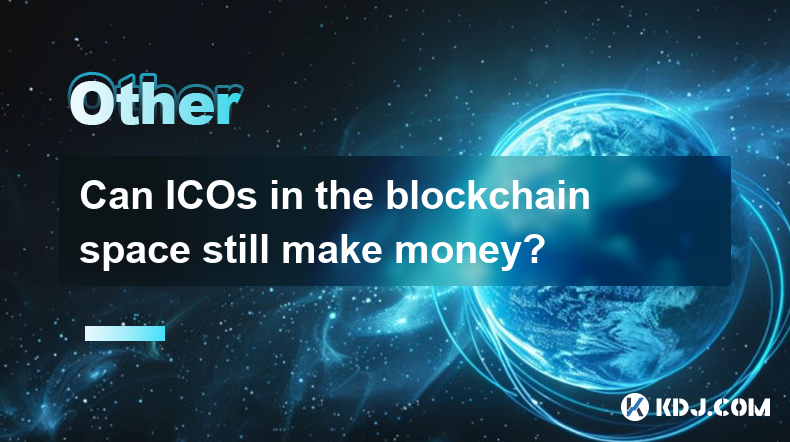
Can ICOs in the blockchain space still make money?
Apr 17,2025 at 08:29pm
The landscape of Initial Coin Offerings (ICOs) in the blockchain space has evolved significantly since their peak in 2017 and 2018. Despite the increased regulatory scrutiny and the rise of alternative fundraising methods like Security Token Offerings (STOs) and Initial Exchange Offerings (IEOs), ICOs can still be a viable way to raise funds and generat...

Can the application of blockchain in supply chain finance bring benefits?
Apr 15,2025 at 04:00pm
Can the application of blockchain in supply chain finance bring benefits? The integration of blockchain technology into supply chain finance has garnered significant attention in the cryptocurrency and financial sectors. This article explores how blockchain can potentially revolutionize supply chain finance, detailing its benefits and providing a compre...
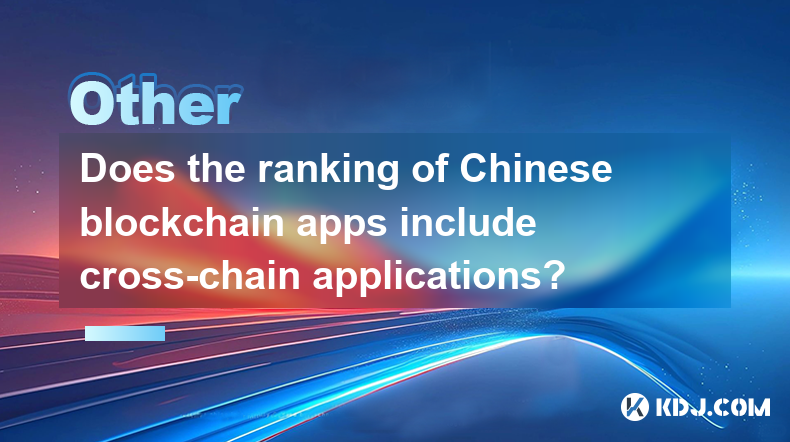
Does the ranking of Chinese blockchain apps include cross-chain applications?
Apr 14,2025 at 04:00pm
The ranking of Chinese blockchain apps is a comprehensive evaluation that takes into account various aspects such as user base, transaction volume, and technological innovation. A pertinent question arises regarding whether these rankings include cross-chain applications. Cross-chain applications, which allow different blockchain networks to interact an...
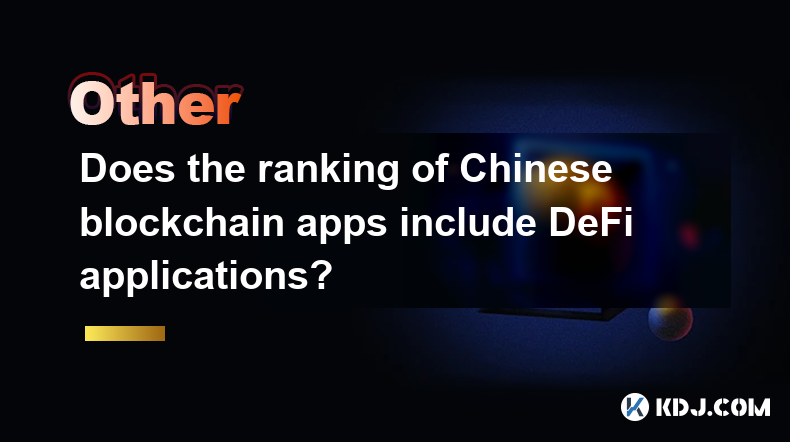
Does the ranking of Chinese blockchain apps include DeFi applications?
Apr 15,2025 at 06:57am
The ranking of Chinese blockchain apps is a comprehensive list that showcases the most popular and influential applications within the cryptocurrency ecosystem. One question that often arises is whether these rankings include DeFi applications. To answer this, we need to delve into the specifics of how these rankings are compiled and what types of appli...
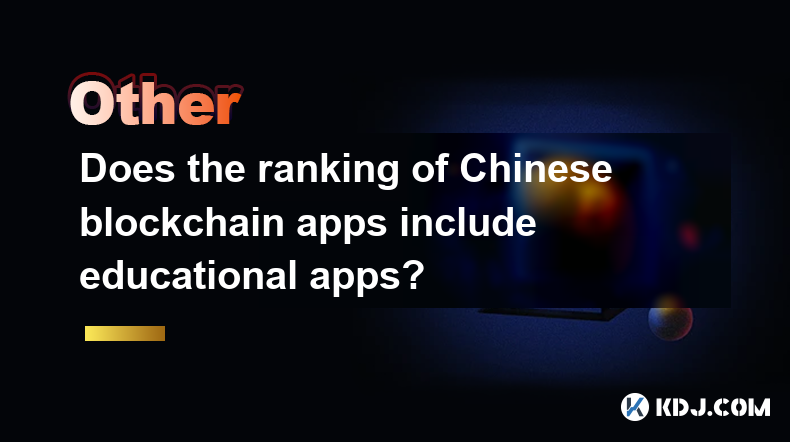
Does the ranking of Chinese blockchain apps include educational apps?
Apr 16,2025 at 03:35am
The ranking of Chinese blockchain apps often includes a variety of categories, from finance and gaming to social networking and beyond. One question that frequently arises is whether these rankings include educational apps. To address this, we need to delve into the specifics of how blockchain apps are categorized and ranked in China, and whether educat...
Does the ranking of Chinese blockchain apps include enterprise-level applications?
Apr 15,2025 at 06:42am
The ranking of Chinese blockchain apps often includes a variety of applications, ranging from consumer-focused to enterprise-level solutions. Understanding the scope and criteria for these rankings is essential to determine if enterprise-level applications are included. This article delves into the specifics of how Chinese blockchain app rankings are co...

Can ICOs in the blockchain space still make money?
Apr 17,2025 at 08:29pm
The landscape of Initial Coin Offerings (ICOs) in the blockchain space has evolved significantly since their peak in 2017 and 2018. Despite the increased regulatory scrutiny and the rise of alternative fundraising methods like Security Token Offerings (STOs) and Initial Exchange Offerings (IEOs), ICOs can still be a viable way to raise funds and generat...

Can the application of blockchain in supply chain finance bring benefits?
Apr 15,2025 at 04:00pm
Can the application of blockchain in supply chain finance bring benefits? The integration of blockchain technology into supply chain finance has garnered significant attention in the cryptocurrency and financial sectors. This article explores how blockchain can potentially revolutionize supply chain finance, detailing its benefits and providing a compre...

Does the ranking of Chinese blockchain apps include cross-chain applications?
Apr 14,2025 at 04:00pm
The ranking of Chinese blockchain apps is a comprehensive evaluation that takes into account various aspects such as user base, transaction volume, and technological innovation. A pertinent question arises regarding whether these rankings include cross-chain applications. Cross-chain applications, which allow different blockchain networks to interact an...

Does the ranking of Chinese blockchain apps include DeFi applications?
Apr 15,2025 at 06:57am
The ranking of Chinese blockchain apps is a comprehensive list that showcases the most popular and influential applications within the cryptocurrency ecosystem. One question that often arises is whether these rankings include DeFi applications. To answer this, we need to delve into the specifics of how these rankings are compiled and what types of appli...

Does the ranking of Chinese blockchain apps include educational apps?
Apr 16,2025 at 03:35am
The ranking of Chinese blockchain apps often includes a variety of categories, from finance and gaming to social networking and beyond. One question that frequently arises is whether these rankings include educational apps. To address this, we need to delve into the specifics of how blockchain apps are categorized and ranked in China, and whether educat...

Does the ranking of Chinese blockchain apps include enterprise-level applications?
Apr 15,2025 at 06:42am
The ranking of Chinese blockchain apps often includes a variety of applications, ranging from consumer-focused to enterprise-level solutions. Understanding the scope and criteria for these rankings is essential to determine if enterprise-level applications are included. This article delves into the specifics of how Chinese blockchain app rankings are co...
See all articles























































































